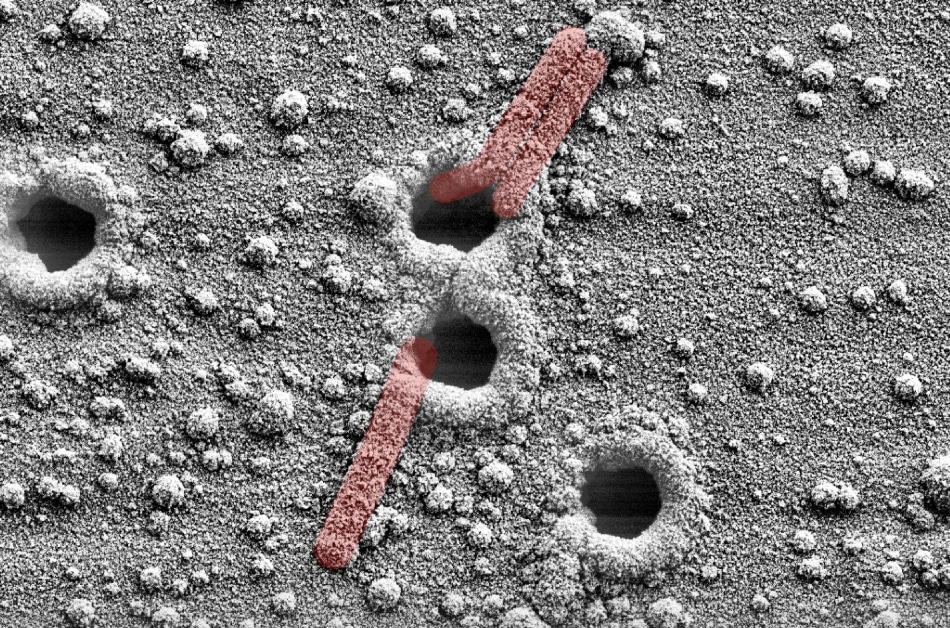Feb 14 2018
Researchers at KTH Royal Institute of Technology have reported a nanoengineering breakthrough that provides hope for treating infections, cancer, and other health problems. In this method, conductive wires of DNA improved with gold could be utilized to electrically measure an infinite number of biological processes at the same time.
 A close up of DNA wires being drawn through the porous membrane. (Image credit: Wouter Metsola Van Der Wijngaart)
A close up of DNA wires being drawn through the porous membrane. (Image credit: Wouter Metsola Van Der Wijngaart)
DNA nanowires have been in development for quite some time; however, the technique developed at Stockholm University and KTH Royal Institute of Technology creates an exclusive three-dimensional (3D) biosensor for improved effectiveness than flat, two-dimensional (2D) sensors.
Our geometry makes it much easier to measure several biomolecules simultaneously, and is also 100 times more sensitive.
This is the first out-of-plane metallic nanowire formation based on stretching of DNA through a porous membrane.
Professor Wouter van der Wijngaart, KTH
The DNA nanowires were treated with gold to make them conductive, and they are produced only when specific biomarker molecules are present in the patient sample and when there is transmit evidence of their presence, even when these molecules are low in concentration. Both sides of the membrane are short-circuited by the conductive wires, making it easy to detect them.
To develop the nanowires, the researchers first captured the molecules on a porous membrane surface, which were engineered to only adhere to specific biomarker molecules present in the sample. Such events of molecular binding subsequently activate the formation of long DNA wires, which were drawn through the pores using vacuum drying. The membrane is then treated with a nanometer-sized gold particle solution, which can only adhere to DNA molecules in a septic sequence, says van der Wijngaart.
The team published the results of the study in Microsystems and Nanoengineering (Nature Publishing Group). Apart from van der Wijngaart and Professor Mats Nilsson from Stockholm University, the authors include Maoxiang Guo (KTH) and Narayanan Madaboosi and Iván Hernández-Neuta (Stockholm University).
The China Scholarship Council and the Swedish Research Council partly funded the research work.